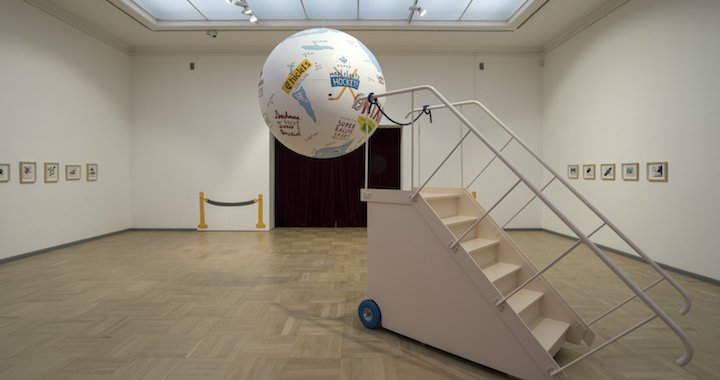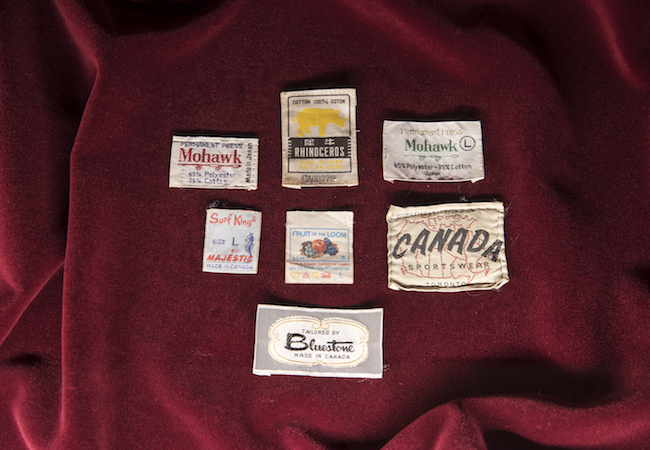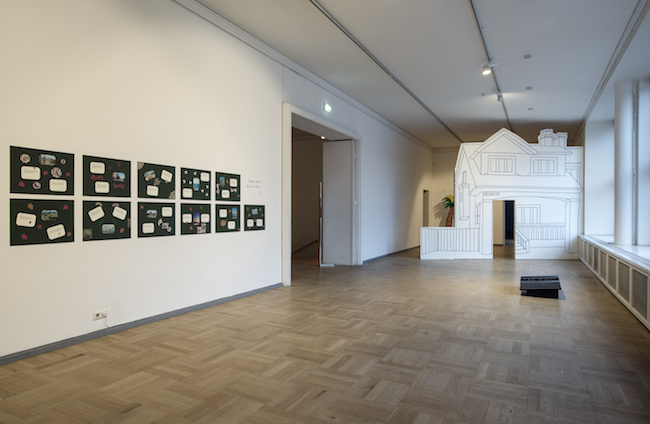
An invitation to the past
An express interview with Estonian artist Marko Mäetamm about his recent project One Month in Canada
03/12/2018
In 1978, Marko Mäetamm’s father went to Toronto to meet his own father. They hadn’t met since 1944, when Marko’s grandfather left his homeland of Estonia because of the ominous political situation. Forty years after this meeting, Marko Mäetamm has collected his memories of the past in a project titled One Month in Canada. The exhibition is on view at the Tallinn Art Hall until February 3, 2019.
This new exhibition is a collaboration between Mäetamm and Canadian writer, performance artist and therapist Rita Bozi and playwright and director Ken Cameron. Through texts, installations, videos, drawings and paintings, One Month in Canada not only tells the story of Mäetamm’s family, but also reviews an experience that is familiar to many Estonians as well as other inhabitants of the Baltic region. Giving the impression of a historical retrospect, the exhibition investigates emotional and very personal documents regarding the truth of the past. These fragmented facts of one family reflect a particular period of time and make one wonder: what has changed? And more importantly: how has history changed in our perception?
Arterritory.com invited Mäetamm to express his opinions and share his comments about the exhibition.

Photo: Karel Koplimets (Tallinn Art Hall)
How did you come up with the idea for this exhibition?
The idea to make this exhibition came from listening to my father, who talked endlessly about his trip to Toronto even though it happened almost 40 years ago. At one point I understood how important that trip had been for him. And, that a part of his mind and soul had somehow got frozen in that time. I felt kind of obliged to do something with this. So I thought that I should use my advantage as an artist and make a project about these stories.
There are so many people who share the same life experience – lots of families got separated during the Second World War, almost every second Estonian has relatives living abroad. With this, I want to point out that this is not a completely unique story. This is almost everybody’s story. So the way we wanted to make this project was that it could resonate with other people’s lives in a first-hand manner, not just exhibiting bits of my personal family history or something like that.

Photo: Karel Koplimets (Tallinn Art Hall)
The pieces in the exhibition tell the story of your father visiting your grandfather in Toronto in 1978. How do the works of art echo this memoir?
The works of art in this project are done in different media: paintings, drawings, three-dimensional objects, videos, real objects and texts. Some objects on show are actually from the trip that my father made 40 years ago. And I made some of the drawings myself in 1978–1979, when I was 13. In the videos, we used real snapshots from my family album and mixed them with some other materials. The material that we used – stories based mostly on oral memory – was very wide-ranging, so we thought that it would also be right to show it that way. The exhibition is made in an eclectic way, but the narrative holds it all together.

Photo: Karel Koplimets (Tallinn Art Hall)
Was there a strong connection between your father and your grandfather? And was there a connection between you and your grandfather?
The connection between father and son is always strong, even if it may not show. Genetically but also irrationally. In this project, the story even goes beyond two father-son relationships: my father and his father, and me and my father. The whole story is told through the first person, who is a 13-year-old Marko Mäetamm back in the late 1970s. Of course, I never met my grandfather in real life, so he’s projected in all these items he sent to us, or what my father brought back from his only trip to see him. I believe this was also one of the reasons why I started to make this project – to get closer to my real grandfather and to find out more about everything that had happened to him and why.

Photo: Karel Koplimets (Tallinn Art Hall)
Do you believe that the fact that your grandfather lived in Canada has had an impact on you as a personality?
I think everything that happens to us has an impact on our personality. In one way or another. I grew up with this abstract idea of a mystical grandfather somewhere on another planet to which we were not allowed to travel. And nobody really wanted to talk about his story. My other grandfather was shot during the Second World War, and this was also a topic nobody wanted to touch in our home. And my father was a seaman and away from home most of the time, so it would sound really silly if I said it didn’t have any impact on my personality.
How important is the fact that this exhibition takes place during Estonia’s centennial year?
Actually, that wasn’t a part of our plan. We started this project three and a half years ago, and at one point Tallinn Art Hall decided that they could fit it into their programme in 2018. Maybe Tallinn Art Hall was thinking about the centenary, but we weren’t. The exhibition wasn’t in any of the official exhibition programmes celebrating Estonia 100, either.

Photo: Karel Koplimets (Tallinn Art Hall)
How did your collaboration with Rita Bozi and Ken Cameron begin, and what is their contribution to the exhibition?
I met Rita and Ken in a very strange way. It was summer 2015, and I had recently opened a big solo show at the KUMU Estonian Art Museum and was playing around with the idea of making a show about my father’s stories about his visit to Canada in 1978. One day somebody named Rita from Canada wrote to me on Facebook and said how much she and her husband, Ken, had liked my show at KUMU during their cultural trip to Tallinn. We started talking, and I found out that they were not visual artists but instead working in the fields of writing and performance and drama. Plus, they were the same age as me.
Rita and Ken told me stories about what Canada and Toronto were like when my father did his trip there. So I took it almost as a sign and invited them to do this project together with me. Their biggest contribution to the project was helping to develop the stories and bringing in more information and specific context from the time when it all happened, from a Canadian point of view. I also believe that this approach made it easier to deal with this material, which was very personal for me. They gave me an outsider’s look and kept the whole picture more clear. Or at least this is what I think.

Photo: Karel Koplimets (Tallinn Art Hall)
This is obviously an emotional and personal interpretation of history. Do you believe that it has a meaningful social and political aspect as well?
This project definitely resonates with our current time in the world. We’ve been thinking about that a lot during this whole process. The world has not really changed much. Problems with refugees, asylum seekers, split families, “our people” and “not our people” – it’s all still here with us, and maybe even stronger in certain aspects. So this project should resonate in this current time quite well. I hope so.

Photo: Karel Koplimets (Tallinn Art Hall)